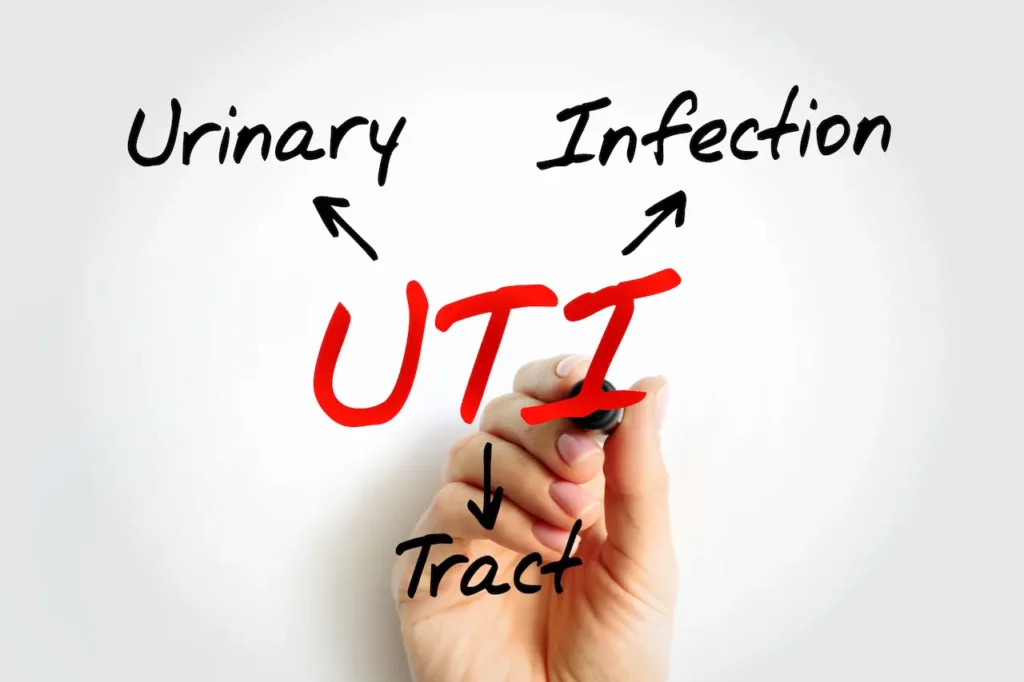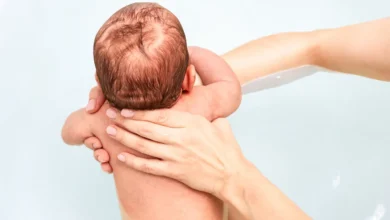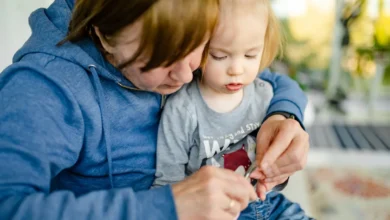He was still wearing nappies. This was a difficult time for me, but I learned a lot from it about how to recognize the signs and symptoms of a UTI and how to treat the condition.
What is a UTI?
An infection of any part of the urinary tract, including the bladder, kidneys, and urethra, is referred to as a UTI. Although UTIs affect women more often than men and children, they are also common among young children. Babies who have not yet been toilet trained and still wear diapers are at a higher risk. Children who are not circumcised or have kidney problems are also at higher risk.
What Causes a UTI?
UTIs can be caused by bacteria that enter the urinary tract, usually from the skin or the bowel. It is more common for babies to wear diapers as bacteria are easily transferred due to the frequent contact with faeces. Poor hygiene, constipation, and holding urine in for too long are all factors that can contribute to a UTI.

UTIs in Babies and Young Children
It can be difficult to recognize the symptoms of a UTI in infants because they cannot always express what is wrong. There are some signs that you should be aware of:
- High fever: A high temperature is one of the first signs of a UTI. A fever in your baby could be a sign that the infection is spreading to the kidneys. It’s vital to seek immediate medical attention in these situations.
- Stinging or Pain While Urinating: This is more apparent in older children who are potty trained. When urinating, they may cry or show signs that they are uncomfortable.
- Urination problems or frequent urination: Your baby may have difficulty urinating or urinating more often.
- Poor Nutrition and Vomiting: Babies who have a UTI can show signs such as vomiting, lack of appetite, or fussiness.
- Wet Clothing or Bedding: Children who have been toilet-trained may start wetting their bed due to a UTI.
- Pain on the side, back, or abdomen could be an indication that the infection is spreading to the kidneys.
- Urine with a Strong Odour, Cloudy, or Bloody can have a foul smell, be cloudy, or be bloody.
- Irritation or General Unwellness A baby can become uncharacteristically fussy, lethargic, or difficult to calm.
It is important to seek medical attention if you suspect that your child or baby has a UTI. Untreated UTIs may lead to kidney damage.
You May Also Like: Risks of Kids Making a Habit of Peeing
Treatment of UTIs
Antibiotics are the most effective treatment of UTIs among babies and children. These drugs work by killing the bacteria that is causing the infection. Even if your child seems to be feeling better, it’s important to give them the entire course of antibiotics.
Your pediatrician might recommend an ultrasound of the kidneys to detect any damage or complications. My son was diagnosed with a UTI over a year ago and still undergoes regular ultrasounds to monitor kidney health.
Pure cranberries can help soothe mild UTI symptoms and speed up healing. However, it is always best to speak with your paediatrician before using this juice.
Preventing UTIs among babies and children
There are a few things you can do to lower the chances of your child developing a UTI.
- Frequent Changes of Diapers: Be sure to change dirty diapers as quickly as possible in order to avoid bacteria lingering around the diaper area.
- Proper hygiene: Teach older kids to wipe the front and back of the toilet after use to prevent bacteria from entering the urinary system.
- Encourage Regular Bathroom Use. Make sure that your child is using the toilet regularly, every 2 to 3 hours when toilet-trained.
- Hydration: Ensure your child drinks enough fluids, especially water, starting at six months.
- Cotton Underwear If your child has been toilet trained, you can dress him in cotton underwear that breathes to encourage good ventilation.
- Cranberry Juice. While not a substitute for medical treatment in all cases, it is believed that diluted cranberry can help to prevent UTIs.
- Avoid tight clothes and bubble baths. Tight clothing can cause irritation to the urethra. Bubble baths can disturb the balance of bacteria in the urinary system.

Risk Factors for UTI in Children
Girls are more susceptible to UTIs, particularly when toilet training starts. The urethras of girls are shorter and are closer to the anus. It is easier for bacteria to enter the urethra. Uncircumcised males under the age of one year are also at a higher risk for UTIs.
Normal bacteria do not reside in the ureter. Certain circumstances can allow bacteria to enter your child’s bladder or stay there. These factors can increase your child’s risk of a UTI.
- A structural deformity in the urinary system or a blockage of one of its organs
- Urinary tract dysfunction
- Vesicoureteral reflux is a birth defect resulting in an abnormal flow of urine backwards.
- Use of bubbles for girls in the bath
- Clothing that is too tight (for girls).
- Wiping your back from front to back after a bowel motion
- Poor toilet and hygiene practices
- Infrequent urination or delaying urination for long periods
What happens if my child has frequent UTIs?
It’s important that you speak to your paediatrician if your child has recurrent UTIs, which are defined as three or more infections in a period of six months. Your paediatrician may refer you to a child’s urologist, who is a specialist in urinary issues in children. The urologist may perform ultrasounds or a “voiding cystourethrogram” (VCUG), which is an X-ray taken of the bladder while urinating, to evaluate your child’s system.
Symptoms and Treatment of UTI in Children
The symptoms of a UTI vary according to the severity of the infection and the age of your child. Infants and young children might not show any symptoms. Symptoms can be general when they occur in young children. These symptoms may include:
- fever
- poor appetite
- vomiting
- diarrhea
- irritability
- The overall feeling of Illness
Other symptoms can vary depending on which part of the urinary system is infected. Your child’s symptoms of a bladder problem may include:

- Blood in Urine
- Cloudy urine
- foul-smelling urine
- Urination causes pain, stinging, or burning
- Pressure or pain below the navel in the lower pelvis, lower back or lower spine
- frequent urination
- wake up from sleep to urinate
- Minimal urine output
- Urine accidents after toilet training
The condition becomes more serious if the infection has spread to the kidneys. If your child experiences more severe symptoms, they may include:
- irritability
- is chilled by shaking
- High fever
- Skin that is flushed or warm
- nausea and vomiting
- the back or the side
- Severe abdominal pain
- Fatigue
It is easy to overlook the early signs of a UTI. Children under the age of five may not be able to
Conclusion
Most children will recover from UTIs without long-term problems if they are treated early and with the right treatment. To reduce the risk of infection, it’s crucial to watch for symptoms and seek medical attention when needed. Do not hesitate to contact your paediatrician if you have any concerns about the health of your child.
You are not the only one facing these challenges. By being proactive, you will help to ensure the well-being of your child and maintain their little urinary tracts.



